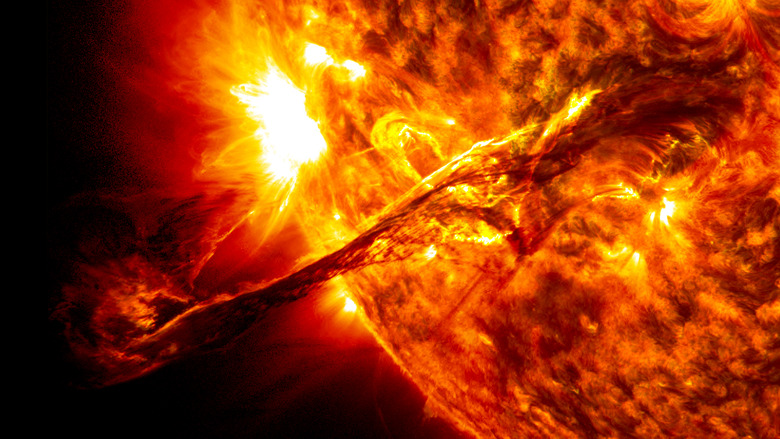The Sun Is Acting Pretty Strange Right Now
Regardless of what religion (if any) you practice, there's no denying that there's one thing responsible for the continued existence of life on Earth, and it rises and sets every single day. Without the sun, we'd be gone, but just because it allows us to exist doesn't mean it can't also cause a bit of trouble every now and again. At the moment, the sun is doing something that scientists didn't really expect, and some are struggling to find an explanation.
Over the past few days, massive sunspots on the sun's surface have made their presence felt here on Earth. The spots, which appear as dark regions on the star's surface, are areas where the sun's complex magnetic fields affect its outer layer, and signal the possibility of solar flares and coronal mass ejections, or CMEs. When those particles from the sun arrive at Earth, they can cause serious issues with communications satellites and even make life a bit more dangerous for astronauts living in orbit.
Decided the current huge sunspot regions were worthy of breaking out the old trusty Earth-ograph (Earth-ometer?) to viz their spatial scale pic.twitter.com/skI52TOTiT
— Karl Battams (@SungrazerComets) September 5, 2017
Sunspots and solar flares are something we've come to expect from the sun, but their timing this time around is of particular interest (and some would argue, concern) for scientists. That's because the sun is currently approaching its solar minimum, which is the bottom end of its 11-year activity cycle in which events like solar flares and CMEs should be an extremely rare occurrence. On the upswing, when the sun reaches its solar maximum, researchers fully expect and await such events, but that's not the case right now.
And it's not just the timing that's causing researchers to raise their eyebrows, but also the size of the flare itself. On Wednesday, September 6th, the largest solar flare since 2005 was recorded. That flare, which was classified as X-Class (the most significant type) with a rating of X9.3, still pales in comparison to the all-time record, which was an X20 flare in early 2001.
It's also worth noting that not everyone in the scientific community finds the event all that odd. Rob Steenburgh, of the National Oceanic and Atmospheric Administration notes that it might not have been expected, but it's more interesting than worrisome. "Even though we're approaching solar minimum, there can still be large regions and events like this," Steenburgh explains. "They're less frequent/common, but no less impressive."
